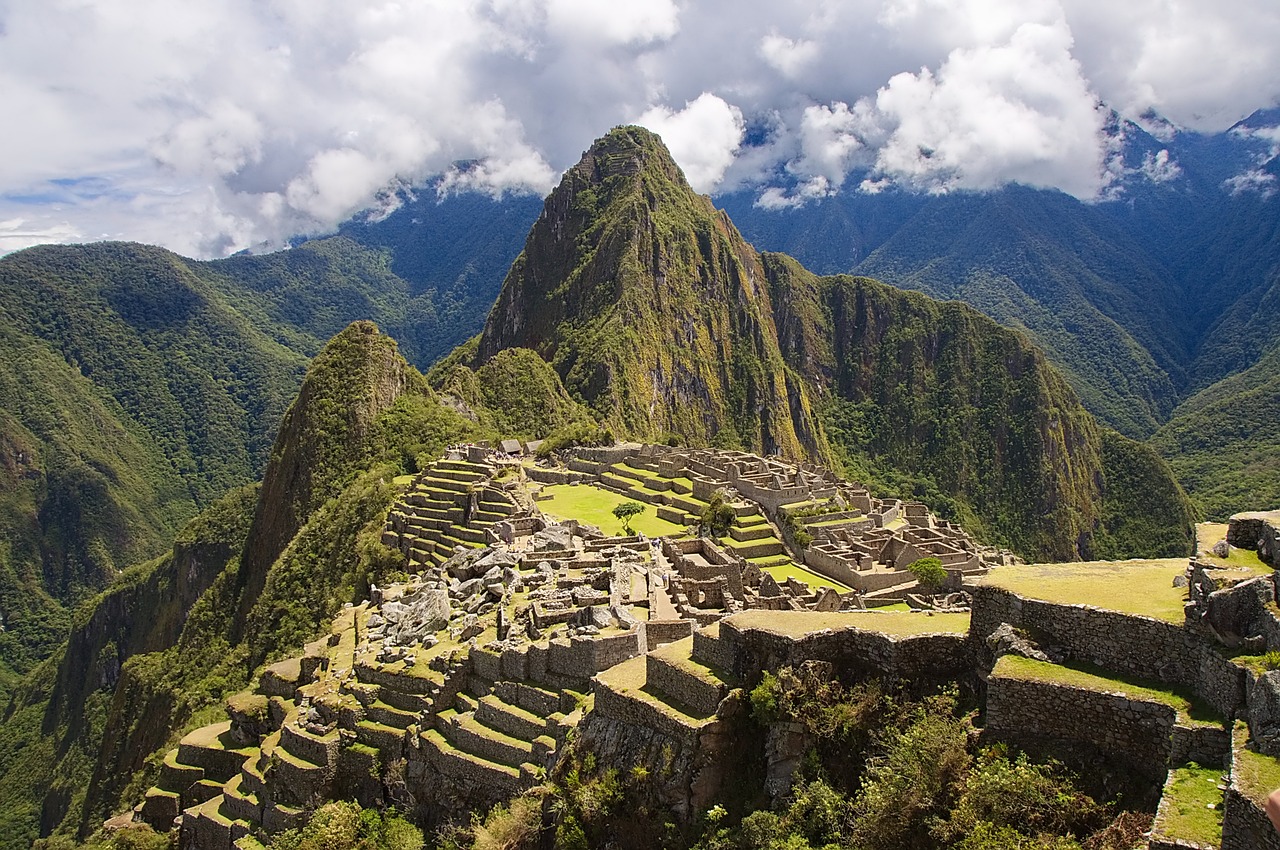Machu Picchu (originally known as Patallaqta) was an ancient Inca village located in the Peruvian jurisdiction of the Andes, eighty kilometers from Cusco and 2,430 meters above sea level. Documents indicate that the village was built in the fifteenth century, but there is no consensus as to the reasons for its construction. Some argue that it was a country retreat for Emperor Pachacutec (1408-1471), in a context of expansionism of the Inca Empire. Others suggest that the citadel was built as a base to manage the food plantation in the region.
During the Spanish colonization (1532-1824), Machu Picchu was gradually abandoned by the locals, earning it the reputation of the “lost city of the Incas”. Although it was not officially occupied, there is evidence that it was known to the Spanish. However, the mountain remained isolated from economic and social life, a condition that continued even after Peru’s independence in the 19th century.
American historiography maintains that Machu Picchu was “discovered” on July 24, 1911 by the American professor and explorer Hiram Bingham (1875-1956) on an exploratory trip accompanied by some colleagues from Yale University. On the recommendation of Professor Albert Giesecke (1883-1968), rector of the National University of San Antonio Abad in Cusco, Hiram Bingham was introduced to Melchor Arteaga, a Peruvian peasant in charge of guiding Hiram Bingham to Machu Picchu, which was already known to an unknown number of local peasants.
Bingham was not the first to visit the ruins. Peruvian peasant Agustín Lizárraga, in search of land for agriculture, reportedly cleared Machu Picchu and recorded his own name on a stone in the Temple of the Three Windows on July 14, 1902, about ten years before the Yale explorers arrived at the site. When Bingham arrived at Machu Picchu in 1911, he found the stone on which was written, in charcoal, “A, Lizárraga 1902”, which he noted in his diary. However, Bingham omitted this information in the official accounts of the expedition that would be published.
Armed with a Kodak camera, Bingham took hundreds of photographs on his first visit to the ruins on July 24, 1911. After returning to the United States, he secured sponsorship for another expedition in 1912, accompanied by a more structured group of geologists, archaeologists, engineers and surveyors. With the dissemination of his research and reports, Bingham became known as the “discoverer” of Machu Picchu, a fame that continues to live on, even in Peru, where the story is often divulged to interested tourists.
In the course of the expeditions, thousands of Inca archaeological pieces and relics were taken to the United States for study and research at Yale University, with the temporary permission of the Peruvian government. Bingham and his team appropriated some fifty thousand Inca archaeological pieces for research in the United States, including gold, silver, wood, bone, stone and ceramics, which provoked successive protests from the Peruvian government in the 20th century.
Some of this material was only repatriated to Peru in 2012, a century after Bingham’s “discovery”, as a result of an agreement between the Peruvian government and Yale University. It is estimated that a large collection of Inca relics still exists in North American and European museums.
Why is Hiram Bingham known as the “discoverer” of Machu Picchu?
The answer lies in the ability to disseminate the facts that the American had at the time. Bingham’s records were the subject of a complete edition of National Geographic, in April 1913, a fact that made him known in the international academic community, especially in the United States.
From Bingham’s perspective, his trip had exploratory and scientific purposes, since the region was considered virgin territory for adventures, research and explorations, which contrasts with Lizárraga’s vision, for whom Machu Picchu was an area of sowing, with no reason for its international dissemination.
It would be unfair to underestimate the success of Hiram Bingham, who studied the region in depth and who, in fact, ventured into the Andean mountains in search of Vitcos, the region where the last Incas took refuge after the Spanish invasion, as well as Nusta Isppana. As a result of this mission, he reached Machu Picchu. He was one of those responsible for making Machu Picchu visible to the world at the beginning of the 20th century. However, he was definitely not the pioneer discoverer of the region.
It would be equally unfair to ignore that the “discovery” of Machu Picchu was a transnational feat involving North Americans, Peruvians and researchers from other countries who knew of the existence of the ruins, and who recorded reports and testimonies long before Bingham’s arrival in 1911. Examples are the Germans Rudolph Berns and Hermann Göring, the French-Austrian Charles Wienner and the Italian Antonio Dell’Acqua, among others.
According to the official website of the Machu Picchu National Park, “the city was never lost, as it was occasionally visited and inhabited”, which contrasts with Bingham’s account of his declared “discovery” of the region.











